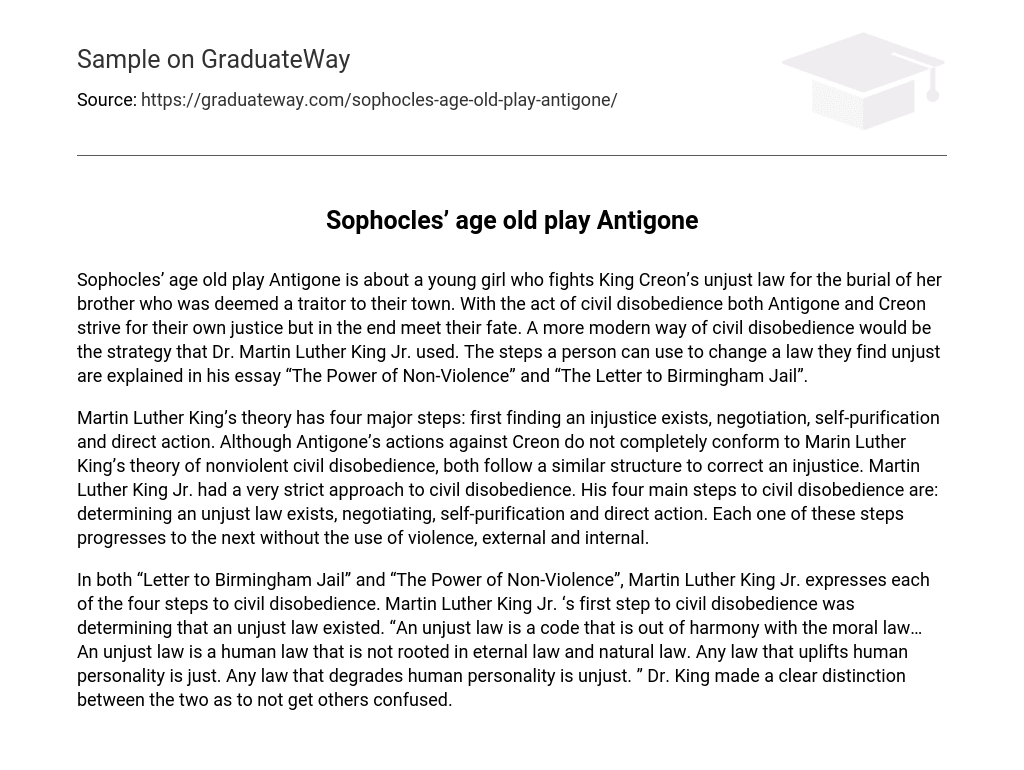Sophocles’ age old play Antigone is about a young girl who fights King Creon’s unjust law for the burial of her brother who was deemed a traitor to their town. With the act of civil disobedience both Antigone and Creon strive for their own justice but in the end meet their fate. A more modern way of civil disobedience would be the strategy that Dr. Martin Luther King Jr. used. The steps a person can use to change a law they find unjust are explained in his essay “The Power of Non-Violence” and “The Letter to Birmingham Jail”.
Martin Luther King’s theory has four major steps: first finding an injustice exists, negotiation, self-purification and direct action. Although Antigone’s actions against Creon do not completely conform to Marin Luther King’s theory of nonviolent civil disobedience, both follow a similar structure to correct an injustice. Martin Luther King Jr. had a very strict approach to civil disobedience. His four main steps to civil disobedience are: determining an unjust law exists, negotiating, self-purification and direct action. Each one of these steps progresses to the next without the use of violence, external and internal.
In both “Letter to Birmingham Jail” and “The Power of Non-Violence”, Martin Luther King Jr. expresses each of the four steps to civil disobedience. Martin Luther King Jr. ‘s first step to civil disobedience was determining that an unjust law existed. “An unjust law is a code that is out of harmony with the moral law… An unjust law is a human law that is not rooted in eternal law and natural law. Any law that uplifts human personality is just. Any law that degrades human personality is unjust. ” Dr. King made a clear distinction between the two as to not get others confused.





